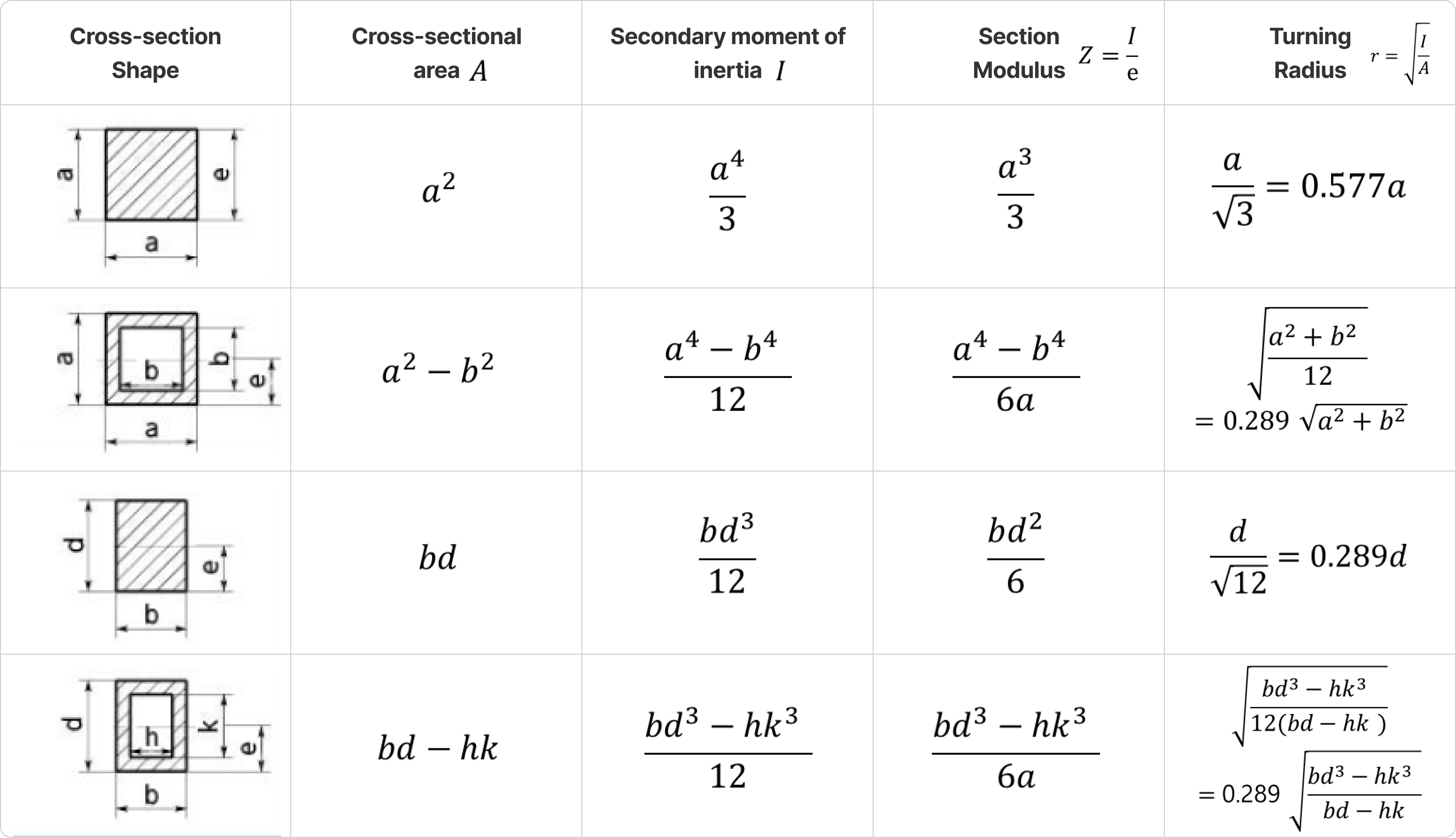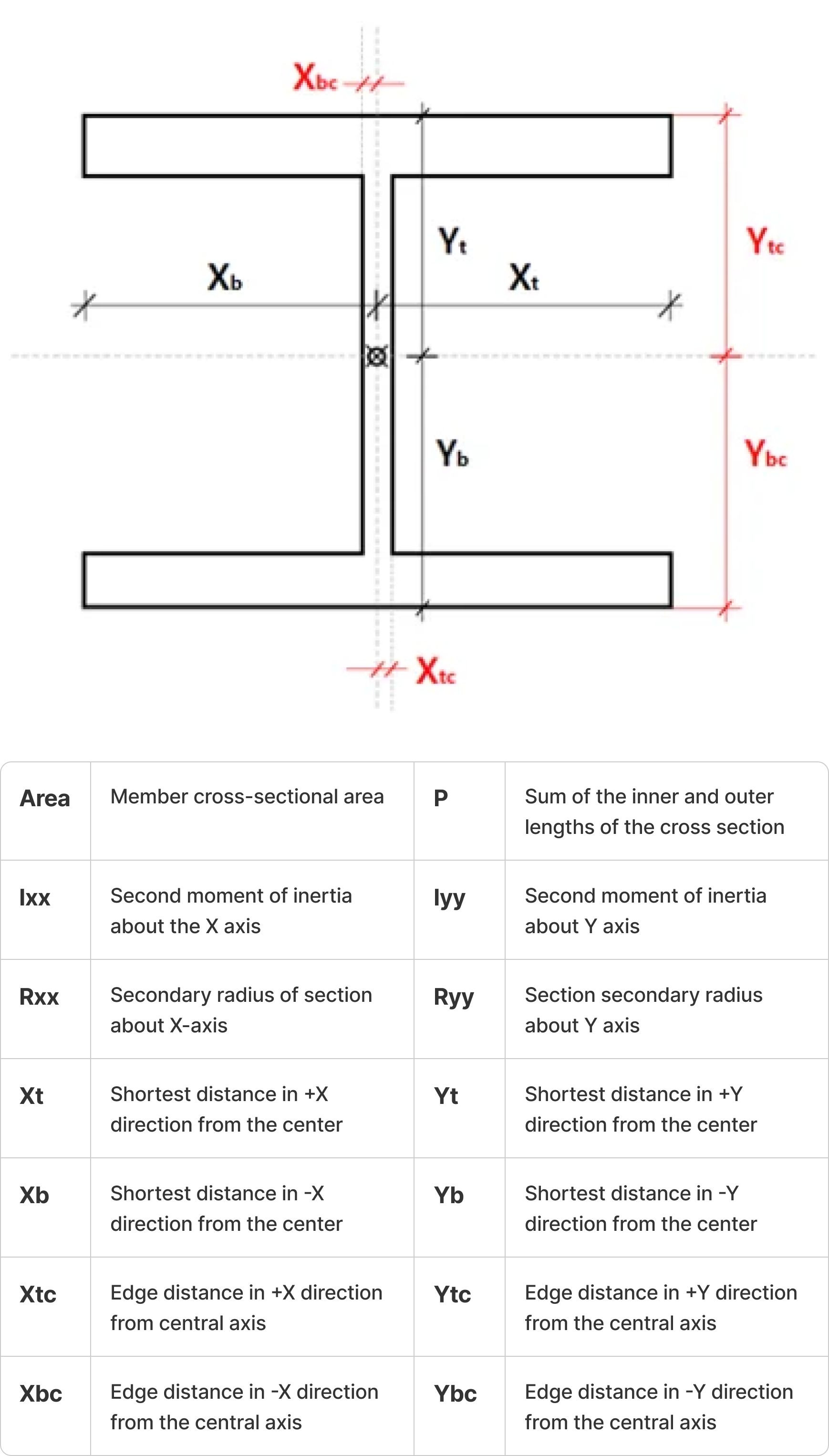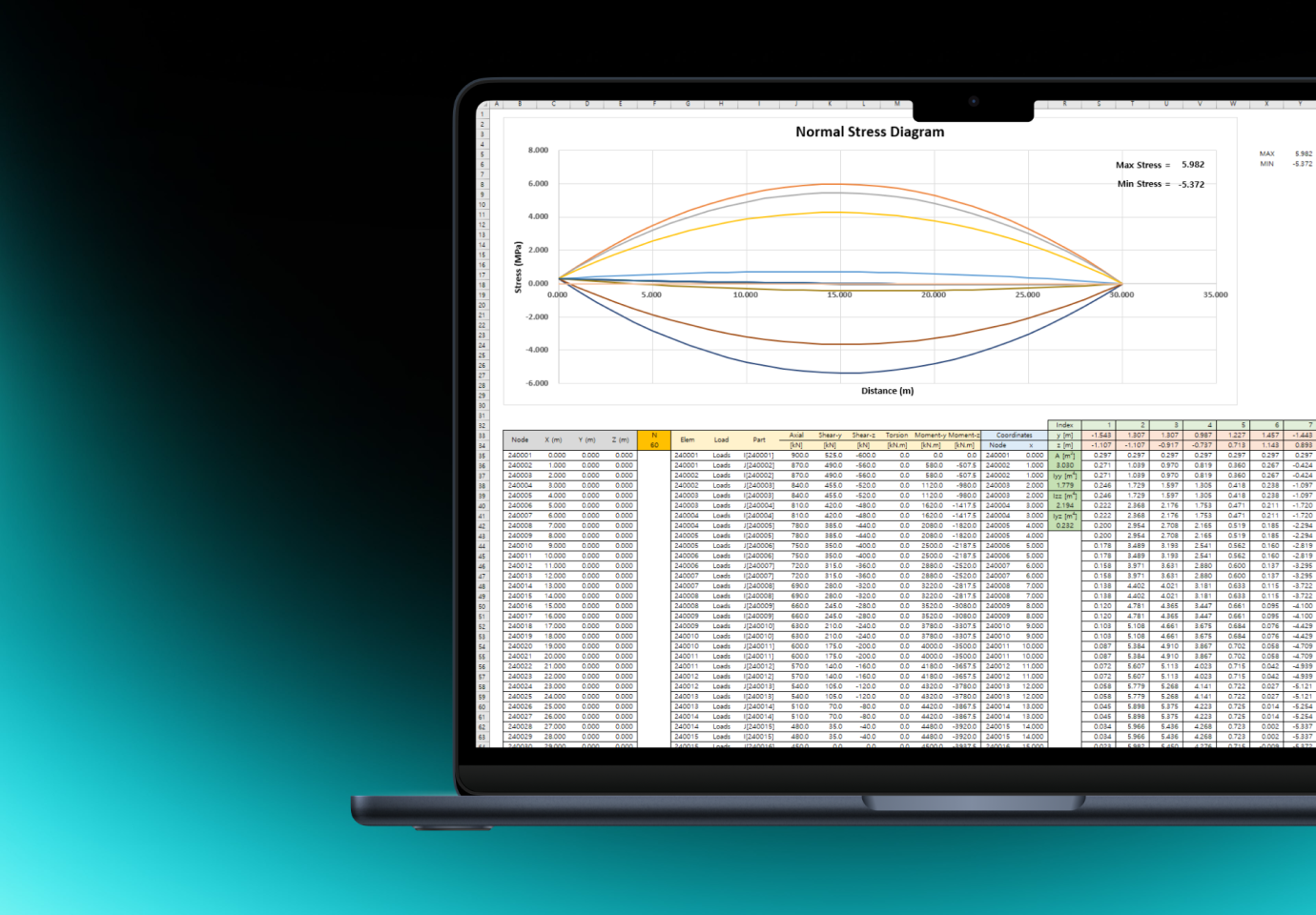1. How to link a CAD cross-section with an analysis model at once?
Wouldn't it be convenient if the sections of the drawings you have could be seamlessly integrated with the analysis program without any additional work? Integrating analysis models with irregular section structures, without the need for section extraction or calculation! In this content, we will show you how to easily solve the calculation of irregular sections when creating structural analysis models by integrating CIVIL NX and CAD.
2. What are sectional properties/characteristics?
Sectional properties refer to various characteristics used to analyze how the cross-section of a structure reacts to external loads. Sectional properties are determined by the shape of the cross-section, and the strength of the structure can vary greatly depending on its shape. Calculating sectional properties is essential in the design and analysis of civil structures, as it allows us to interpret and design the relationship between the forces and stresses acting on the structure.
3. What components are included in sectional properties?
Sectional properties mainly include the following components:
- Area (A): The total area of the cross-section, used to determine the load distribution and strength of the section.
- Second Moment of Area (I): Used to determine the bending strength and stiffness of the structure. This value is important in calculating the deformation of the section caused by the load.
- Section Modulus (Z): This represents the resistance of the section to bending and is calculated by dividing the second moment of the area by the distance to the extreme fiber (the furthest fiber from the neutral axis). The larger the value, the greater the ability of the section to withstand bending loads.
- The radius of Gyration (r): This represents the mass distribution of the section and is used to calculate the resistance to buckling of the structure. It is calculated by dividing the second moment of the area by the area and taking the square root.
- Neutral Axis: This axis refers to the axis of the section that experiences no deformation under load. The neutral axis is used to determine the response of the section to bending loads.
 Figure1. Example
Figure1. Example
These sectional properties are essential for the design, analysis, and evaluation of civil structures, and are crucial in predicting the behavior of structures under various load conditions such as bending, compression, and buckling.
4. Easy and fast calculation of sectional properties: SPC function!
Calculating these sectional properties can be complex and time-consuming. Especially for irregular or non-standard sections, the calculation process can be even more complicated. With MIDAS CAD, you can easily calculate these complex sectional properties using the SPC (Sectional Property Calculator) function! Previously provided as a separate program, the SPC function is now integrated into MIDAS CAD, allowing you to calculate stiffness data for any shape or form. The SPC function provides various sectional constants required for structural calculations, including the second moment of area, sectional radius of gyration, and more.

Figure2. SPC Function
- Second Moment of Area: Represents the properties of the section to resist bending or deflection.
- Second Radius of Gyration: Represents the properties of the section to calculate the buckling load on the member.
- Span Length: Distance to the edge of the steel section.
5. Features of MIDAS CAD's SPC function
MIDAS CAD's SPC supports more efficient structural design through various features. Previously, we had to extract cross-sections from CAD, export them to a separate program for calculations, and then import them back into MIDAS CIVIL. It was a repetitive and meaningless process of exporting and importing. Now, with the SPC feature of MIDAS CAD, we can work more efficiently.
 Figure3. MIDAS CAD SPC Function
Figure3. MIDAS CAD SPC Function
A. Advantages of MIDAS CAD’s SPC function
MIDAS CAD's SPC function supports more efficient structural design through the following features:
From object creation to section creation and integration, all can be done in one product.
You can export section properties including section shape to MIDAS CIVIL.
The SPC module of MIDAS CIVIL is fully integrated into MIDAS CAD, ensuring no loss of information.
Manage multiple sections in one DWG file for easy file management.
If a section is modified, the modified section is automatically updated in MIDAS CIVIL.
For the input section, generate the optimal mesh and calculate the section properties.
Calculation of composite sections composed of multiple materials is possible.
Apply section creation and MIDAS CIVIL's construction stage analysis by distinguishing parts according to construction stages.
 Get Started midas Civil
Get Started midas Civil
 Featured blog of this week
Featured blog of this week










